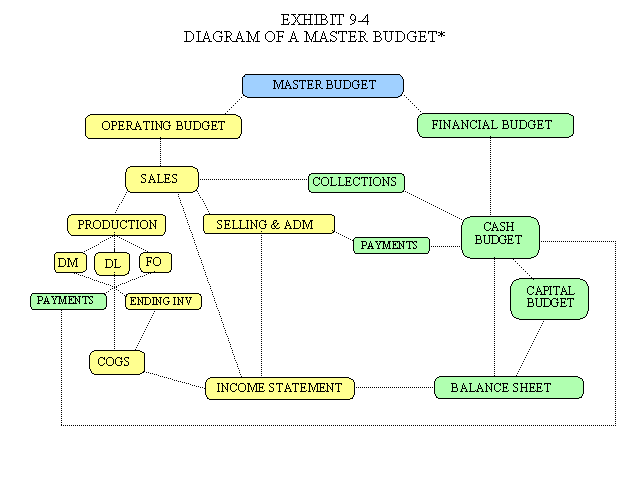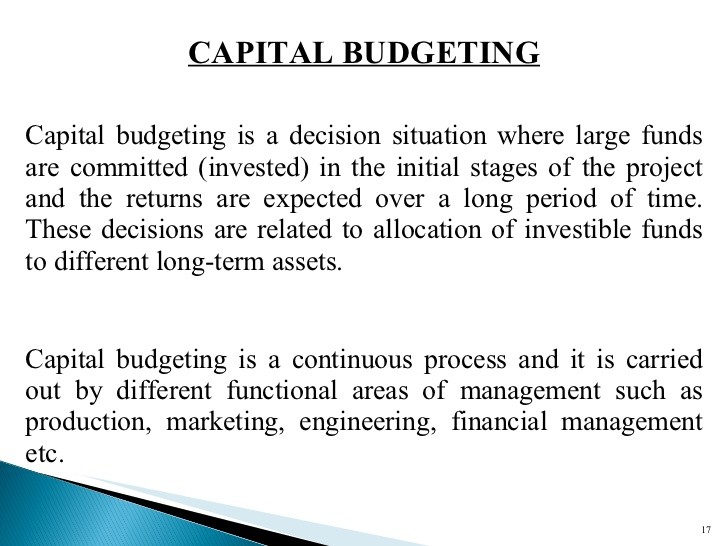Overview of Capital Budgeting
Post on: 16 Март, 2015 No Comment

Capital budgeting is the process of analyzing and ranking proposed projects to determine which ones to invest in.
There are three general methods for deciding which proposed projects should be ranked higher than other projects, which are (in declining order of preference):
- Throughput analysis. Determines the impact of an investment on the throughput of an entire system.
- Discounted cash flow analysis. Uses a discount rate to determine the present value of all cash flows related to a proposed project. Tends to create improvements on a localized basis, rather than for the entire system, and is subject to incorrect results if cash flow forecasts are incorrect.
- Payback analysis. Calculates how fast you can earn back your investment; is more of a measure of risk reduction than of return on investment.
These capital budgeting decision points are outlined in the following sections.

Throughput Analysis
Under throughput analysis, the key concept is that an entire company acts as a single system, which generates a profit. Under this concept, capital budgeting revolves around the following logic:
- Nearly all of the costs of the production system do not vary with individual sales; that is, nearly every cost is an operating expense; therefore,
- You need to maximize the throughput of the entire system in order to pay for the operating expense; and
- The only way to increase throughput is to maximize the throughput passing through the bottleneck operation.
Consequently, you should give primary consideration to those capital budgeting proposals that favorably impact the throughput passing through the bottleneck operation.
This does not mean that all other capital budgeting proposals will be rejected, since there are a multitude of possible investments that can reduce costs elsewhere in a company, and which are therefore worthy of consideration. However, throughput is more important than cost reduction, since throughput has no theoretical upper limit, whereas costs can only be reduced to zero. Given the greater ultimate impact on profits of throughput over cost reduction, any non-bottleneck proposal is simply not as important.
Discounted Cash Flow Analysis
Any capital investment involves an initial cash outflow to pay for it, followed by a mix of cash inflows in the form of revenue, or a decline in existing cash flows that are caused by expense reductions. We can lay out this information in a spreadsheet to show all expected cash flows over the useful life of an investment, and then apply a discount rate that reduces the cash flows to what they would be worth at the present date. This calculation is known as net present value. Net present value is the traditional approach to evaluating capital proposals, since it is based on a single factor cash flows that can be used to judge any proposal arriving from anywhere in a company.
For example, ABC Company is planning to acquire an asset that it expects will yield positive cash flows for the next five years. Its cost of capital is 10%, which it uses as the discount rate to construct the net present value of the project. The following table shows the calculation:














